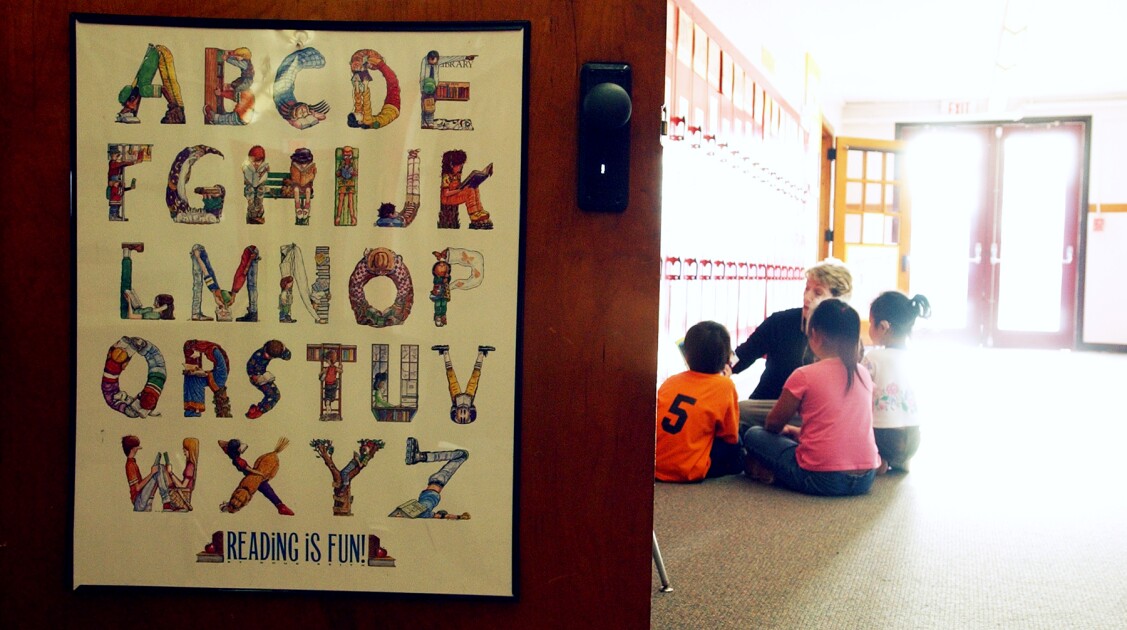Download “Making the Connection: A decade of standards-based reform and achievement” — a special web-only report with a more comprehensive analysis on achivement and policy.
Quality Counts 2006 finds that over the past decade states have increasingly adopted core policies related to standards-based education—academic standards, aligned assessments, accountability, and efforts to improve teacher quality. The report also highlights widespread achievement gains on the National Assessment of Educational Progress over the same period, particularly in mathematics.
A more controversial issue is whether rising student achievement during this period can be linked to state policy. To explore this question, the EPE Research Center performed a series of statistical analyses using regression models to measure the relationship between state-policy implementation and student achievement.
Return to main story,
The predictor for the analyses was changes in the strength of states’ standards-based policies between 1997 and 2005. The Research Center used 24 individual policy indicators to create an overall scale for standards-based policy implementation, as well as subscales for standards, assessments, accountability, and efforts to improve teacher quality. The use of these subscales allowed the researchers to consider whether particular policy areas contributed relatively more or less to changes in achievement.
The outcome in the regression models was changes in NAEP scale scores, between 1996 and 2005 for math, and between 1998 and 2005 for reading. The center conducted separate analyses for math and reading in grades 4 and 8.To avoid biasing the results, the regression models controlled for states’ initial NAEP performance at the start of the period, and for the initial strength of states’ standardsbased policies. Preliminary analyses also examined the relationship between achievement gains and measures of financial resources and equity, but found no effects after controlling for prior achievement levels. These finance indicators were not included in subsequent models.
The center’s first set of analyses found a moderate positive relationship between states’ overall implementation of standards-based policies and student achievement gains for math, but a slight negative relationship for reading. Additional regression models breaking down the policy indicator into its four subscales revealed that implementation of policies to support teacher quality related negatively to achievement gains in both math and reading, while effects were positive for standards, assessments, and accountability.
In a final analysis, the Research Center eliminated the teacher-quality policies from the overall measure of standards-based implementation.With attention focused specifically on standards, assessments, and accountability, the relationship between states’ policy implementation and gains in student achievement became much stronger. The enactment of a full complement of standards, assessment, and accountability policies was associated with statistically significant gains of 13 points in 8th grade math and 9 points in 4th grade math. Effects were positive but more modest for reading.
Impacts of Standards-Based Reform 
Detailed analysis shows that policies to improve teacher quality have a consistent negative relationship with achievement growth in both subjects (4th grade math shown).
|
Impact of Standards-Based Policies on 4th Grade 
In a second set of analyses, teacher-quality indicators are removed from the overall index of standards-based reform implementation The new analysis shows positive impacts of standards-based reform on both subjects. Effects are statistically significant for math. |
Impacts of Standard-Based Reform (Without Teacher Quality) on NAEP Achievement 
**Standards-based reform impact on achievement is statistically significant. SOURCE: Editorial Projects in Education Research Center, 2006 |







